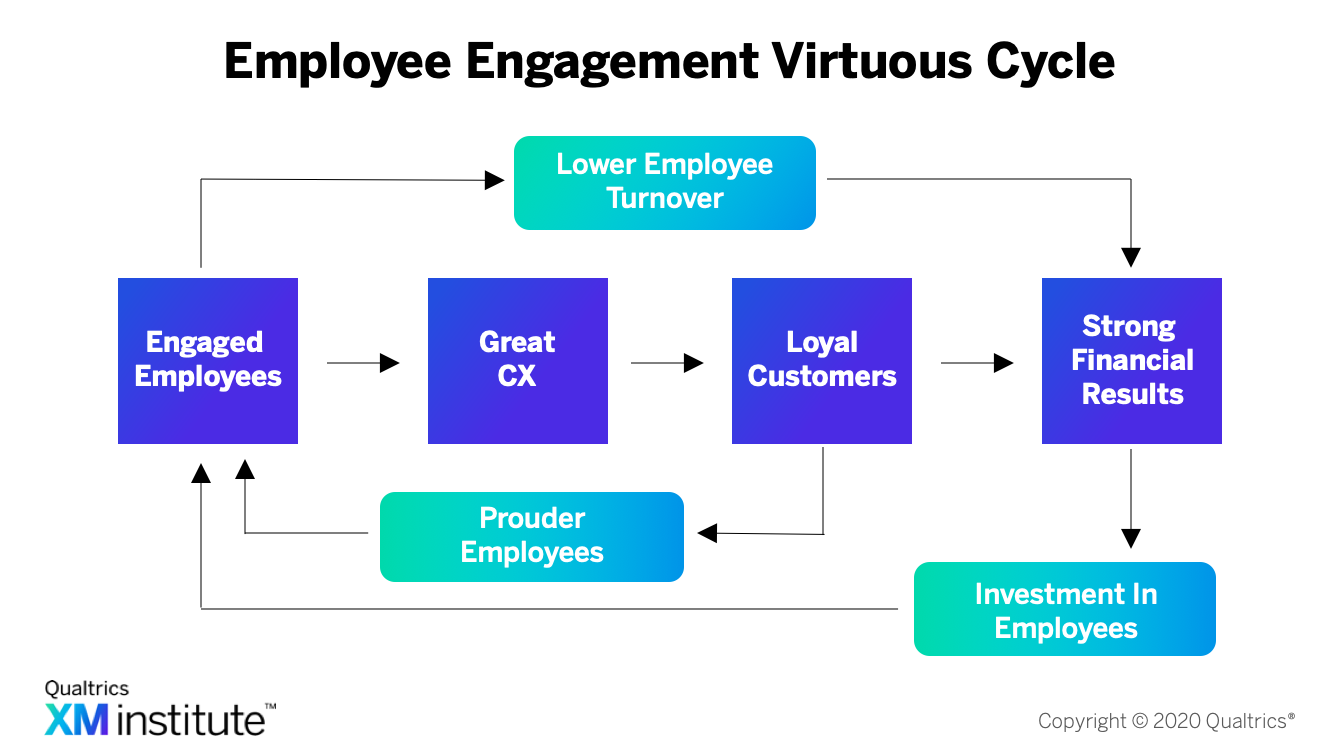In this series of posts, we examine some of the top mistakes companies make in their customer experience management efforts. This post examines mistake #6: Ignoring Employees. Not surprisingly, customer experience programs focus on customers. But they often don’t spend enough time cultivating one of their most important CX assets: Employees.
One of our 6 Laws Of Customer Experience is: Unengaged employees can’t create engaged customers. You can’t sustain great customer experience unless your employees are on board. For many companies, the path to great customer experience not only needs to include employees, it needs to start with them. Why? Because there’s a virtuous cycle that comes from engaging employees:

Herb Kelleher, the founder of Southwest, does a great job of clarifying why he built employee engagement into the fabric of the airline:
“If you create an environment where the people truly participate, you don’t need control. They know what needs to be done and they do it. And the more that people will devote themselves to your cause on a voluntary basis, a willing basis, the fewer hierarchies and control mechanisms you need.”
Unfortunately, employee engagement is lower than it should be at many companies because:
- Employee engagement isn’t in the plans. Customer experience efforts focus on fixing customer interactions and processes, but they often don’t address the ongoing engagement of employees that isn’t tied to a specific process or interaction.
- Cultural change isn’t easy. Without a specific plan to improve employee engagement, it’s not likely to get better. Changing a company’s culture requires clear and persistent effort.
Here are some tips for avoiding this mistake:
- Tap into employees’ customer insights. Front line employees know a lot about customers; they interact with customers all the time. All too often, companies don’t use this key insight. Develop a program where you regularly collect feedback from customer-facing employees about what they’re seeing: problems, opportunities, and general observations. If employees see that their insights are being used and valued, then they will feel more engaged with the company.
- Spread customer feedback. The more that employees understand customers, the more they will feel connected to delivering great customer experience. That’s why companies should find ways to deliver relevant customer feedback widely across their organization.
- Measure employee engagement. If you want employee engagement, set goals for it and measure it. Many companies have annual or semi-annual employee surveys, but they don’t systematically act upon it. Companies should establish some clear metrics around customer engagement, maybe using a simple Net Promoter-like question: How likely are you to recommend <COMPANY> to a friend or colleague as a good place to work?
- Design for employee engagement. Companies need an explicit track of effort around employee engagement and communications within their customer experience efforts. Another of our 6 Laws Of Customer Experience is: employees do what is measured, incented, and celebrated. So companies need to purposefully design the measurements, incentives, and celebrations that reinforce employee engagement.
- Stop relying on heroes. When individual employees decide to ignore policies and procedures to deliver a great customer experience, it often makes a great story. But these heroic efforts don’t scale; they can’t be depended upon and they tend to burn out your people. Companies need to invest in their people, developing the processes, rules, tools, and training that make it easy for employees to consistently deliver a great experience.
The bottom line: Employees can make or break any CX effort.
This blog post was originally published by Temkin Group prior to its acquisition by Qualtrics in October 2018.





